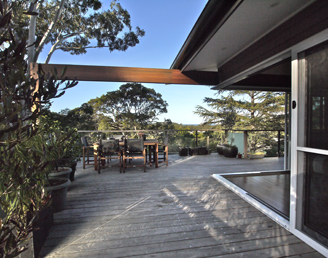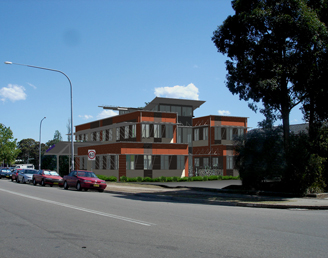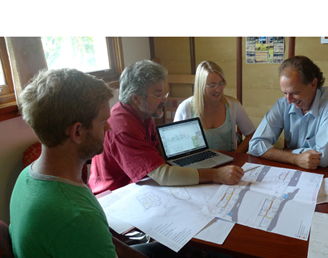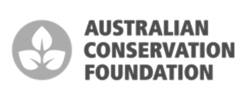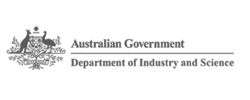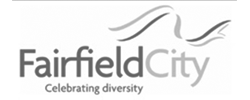The fires rage, why not the debate?
Posted by admin on 29/01/2013 at 9:14 amLie back and think of England – or dance naked on the coffee table?
Another flood-punctutated fire season is in full swing and all we can do is hope Elvis the skycrane is around and the wind change is favourable. Otherwise, we just lie back and think of England, as it were. And that is the problem – after 225 years we are still thinking of, or more accurately, thinking like Englishmen. And now we are accepting mega-fires as an inevitability. When will we start thinking like Aboriginals in how we manage this country. Let’s begin by asking how come Aboriginal people do not have a long sad history of ‘Black Saturdays’?
I do not mean to belittle the efforts of firefighters. They are courageous, dedicated and self sacrificing heroes. But like the heroes at Gallipoli, I fear their sacrifice is too often in vain, and in the long sweep of history, misguided. I am a volunteer with a Community Fire Unit with Fire & Rescue NSW, and have battled bushfires since 1979, and while that does not give me the same level of personal experience as many RFS or CFA members, I have stared down the throat of the roaring monster, felt the guttural fear generated by a force way beyond my control, and I have witnessed at close quarters the destruction and loss wrought by fires big and small, including the immediate aftermath of the Black Saturday fires. In fact, those experiences reinforce my growing conviction that the effort and sacrifice of the fireys should not be squandered.
In 1788 the Australian bush was a parkland. It was possible to ride a horse at full gallop in the as yet untouched country behind the Sydney Cove settlement. (Watkin Tench, A Complete Account of the Settlement at Port Jackson, 1793) The first overland crossing from the early settlements at Hobart to Launceston was made by bullock dray, with not one tree felled to make room (in The Biggest Estate on Earth, Gammage, Allen & Unwin, 2011). The surveys and drawings of the early explorers show lines of dense vegetation separating areas of pasture, like broad fencelines. And everywhere they recorded smoke in the distance, and “blacks making fire” (Gammage, 2011).
Professor of History at ANU, Bill Gammage, in his landmark tome “The Biggest Estate on Earth”, says that the vegetation was managed to create a variety of crops over the course of the year, some of which were harvested directly, and others (pasture mainly) left to attract and fatten game, for hunting. And the tool for managing all of this was fire, used to the same effect that Europeans achieved using fences and ploughs. And yet this intensively managed landscape also maintained the full biodiversity that the ‘settlers’ inherited, and which we are losing at an increasing rate even now.
The crushing reality is that with very few isolated exceptions, there was no such thing as wilderness in Australia. It was mostly managed land. Culture and nature, hand in glove, in a very sustainable balance. This is a shock to many of us, especially when we have hung our hats on a particular notion of ‘wilderness’ for so long. Really, we should be shouting out about protecting ‘country’ – the word used so evocatively by Aboriginal people, like ‘mother’. For Country is a land in balance – managed, not exploited. This may in fact be one of the most effective and literal interpretations of Genesis 1: ‘to be a loving husband to the land’, traditionally misinterpreted as ‘to be an abusive exploitative chauvinist who cares nothing for the land’s wellbeing but looks for every opportunity to squeeze whatever he can from it.’
A major benefit of having a mosaic of different flora, with varying fuel loads, is that if a fire starts, before it gets too far out of control it will run into an area recently burnt and/or of a less combustible vegetation type. With enough of these slow points holding progress back, a cool change would come and with careful back-burning, the beast would be contained. Had this, or something very like it, not been the case, Aboriginal culture would be full of harrowing stories and local extinctions. Neither of these is the case, and so it is self evident that mega-fires did not occur. Of course there are stories about fires that should not have occurred, but these are isolated, with strong points of law attached to them.
Colonialisation changed that mode of management across nearly the whole country. Old ways are mostly forgotten, the law and culture shattered. A romantic but inaccurate notion of ‘wilderness’ has taken over. From 1996 to 2006, NSW Premier Bob Carr proclaimed a swag of new national parks. Many of these were marginal grazing country, since destocked and allowed to return to their ‘natural state’. But it had not been in that state for the previous 40,000 years. Yet neither Carr nor any subsequent Premier expanded the National Parks and Wildlife Service budget and staffing to manage this extra real estate. And even then it would have managed it the wrong way. This is a familiar story in most states.
But not quite everywhere. In the Kimberley – that blessed wild region the size of Victoria where hardly anyone from ‘down south’ goes, where WA Premier Barnett is hell bent on drilling and digging and fracking to extract yet more minerals and fossil fuels – there is a an area about the size of greater Newcastle-Sydney-Wollongong which has begun reverting to traditional fire management.
Mornington Sanctuary (the old Mornington Station since bought by Australian Wildlife Conservancy) in conjunction with several adjoining cattle stations and a national park, has re-engaged the local community to burn Country according to the old law and culture. This is done in a very hi-tech way, with satellite mapping and photography, helicopter fire drops, and careful on-ground sampling and measurements. I nick-named it ‘sat-nav firestick’. And it is having surprisingly positive results.
Under the old regime, there would be regular late dry season wildfires, that burned way too hot, over unplanned areas, causing stock losses, wildlife losses, and poor pasture management. Now, they have measured a strong bounce back in small marsupial populations, have no out of control wildfires, and the stations are making more profit in spite of carrying less stock. So far, the only downside is that nobody south of Fitzroy Crossing has taken much notice.
So how do we get governments and the community to take notice, to question the inevitability of mega-fires, to seek what remnants there may be of the old ways?
A 2013 study released by the ANU (“Investments in Fire Management: Does Saving Lives Cost Lives?” ) questions the money currently spent on fires generally (both building and bush fires). Lead author Brian Ashe (a standout case of nominative determinism if ever there was one!), on behalf of the insurance industry, argues that we already have a low death rate due to fires, that $16b is a high price to pay for the benefit, and that if this money was partially diverted to other social benefits (education etc), there may be a greater net community return. It’s certainly true that for all the onerous upgrades in the revised Bushfire Construction code (AS3959-2009), nothing but nothing will stand in the way of a mega-fire front. Apart from the moral problem of putting a dollar value on life, this study may jamb a useful crowbar under the hitherto unmoved mass of the status quo, whatever one makes of its conclusions.
This is not about “burning off”. Miranda Devine et al need to understand this is a much more complex management issue than will fit into any shallow argument, and it is not about politics or what the “greenies” have not allowed in the past. Indeed as Professor of Geography and Environmental Studies at UT Jamie Kirkpatrick points out very clearly, mere fuel reduction makes very little difference. This is about a complete rethink on landscape management. It is a challenge for conservationists, as it turns the long held notion of wilderness on its head. It is equally a challenge for bush-conquerors, as it forces them to acknowledge that Aboriginal knowledge refined over millennia was foolishly and utterly disregarded by white supremacists, who now must eat very large slices of humble pie.
Bill Gammage’s seminal work should have been enough to start a fire of debate, but neither he nor I have seen much come of it yet. Bruce Reyburn has blogged, and the odd letter has appeared in The Sydney Morning Herald. Maybe Miranda Devine will prove useful after all, even if only to add publicity to the need for a rethink. I once attended a bible study lead by a dynamic woman who was infuriated by people not engaging in discussion, or testing ideas. “What must I do to get them to say something – dance naked on the coffee table?”
Sometimes getting a serious scientific debate going in Australia (note the double emphases, Devine et al) is like pulling teeth! Where’s that coffee table…
Dick Clarke
Director – Sustainability
Building Designers Australia
This blog was first published in The Fifth Estate on 24 January 2013.
Sustainable House Design
We will help you create a family home that works well, feels good, is kind to the environment, culturally appropriate and reduces your energy and running costs.
Read MoreSustainable Commercial Buildings
We design your building to help reduce your operating costs, optimize the life cycle of your building, increase your property value and increase employee productivity.
Read MoreWorking with Envirotecture
We design beautiful, sustainable buildings that work for you, your family or your business. Full range of building design, consulting and training services.
Read More
